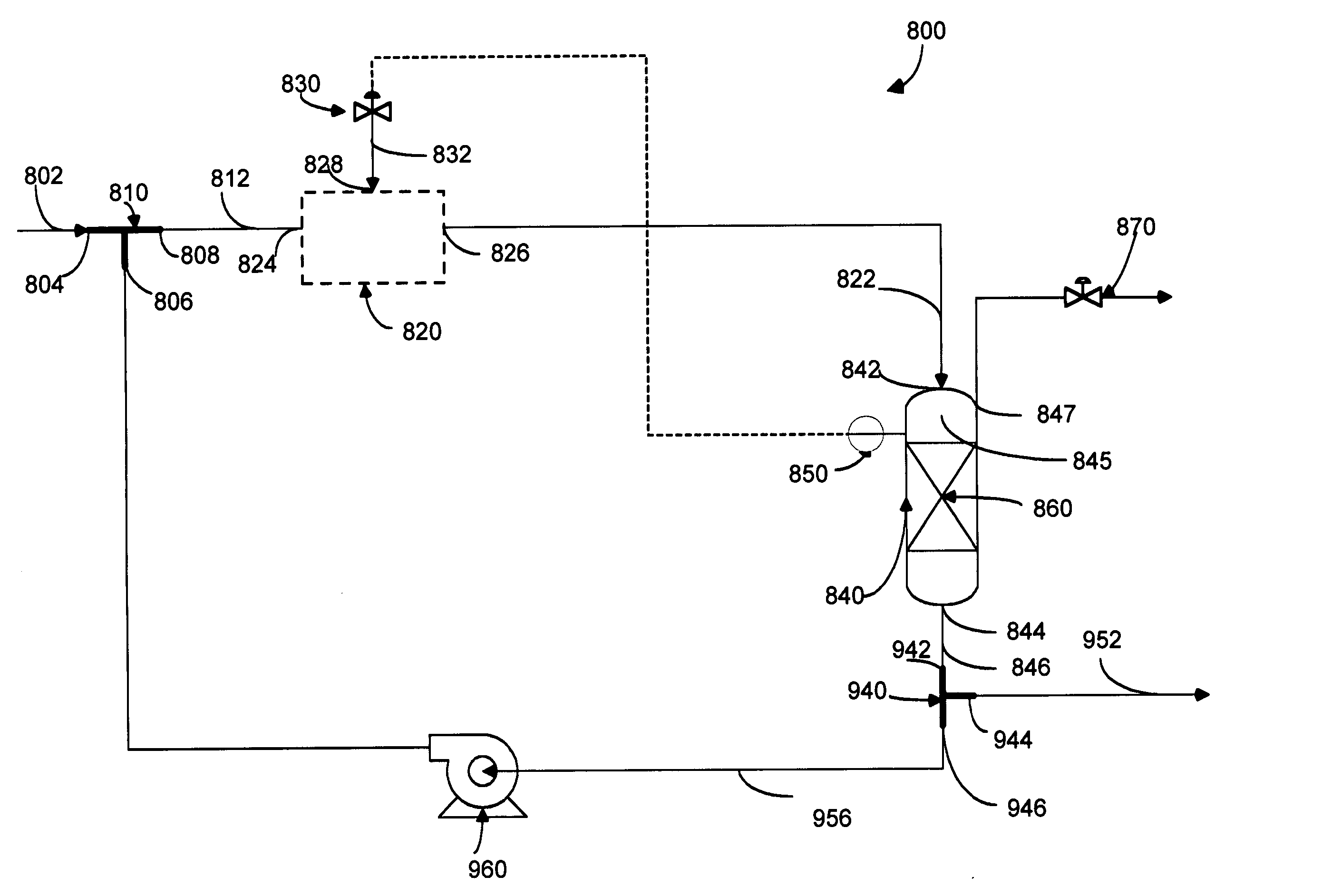Control system method and apparatus for two phase hydroprocessing
- Summary
- Abstract
- Description
- Claims
- Application Information
AI Technical Summary
Benefits of technology
Problems solved by technology
Method used
Image
Examples
example 1
[0167] A feed selected from the group of petroleum fractions, distillates, resids, waxes, lubes, DAO, or fuels other than diesel fuel is hydrotreated at 620K to remove sulfur and nitrogen. Approximately 200 SCF of hydrogen must be reacted per barrel of diesel fuel to make specification product. The diluent is selected from the group of propane, butane, pentane, light hydrocarbons, light distillates, naphtha, diesel, VGO, previously hydroprocessed stocks, or combinations thereof. A tubular reactor operating at 620K outlet temperature with a 1 / 1 or 2 / 1 recycle to feed ratio at 65 or 95 bar is sufficient to accomplish the desired reactions.
example 2
[0168] A feed selected from the group of petroleum fractions, distillates, resids, oils, waxes, lubes, DAO, or the like other than deasphalted oil is hydrotreated at 620K to remove sulfur and nitrogen and to saturate aromatics. Approximately 1000 SCF of hydrogen must be reacted per barrel of deasphalted oil to make specification product. The diluent is selected from the group of propane, butane, pentane, light hydrocarbons, light distillates, naphtha, diesel, VGO, previously hydroprocessed stocks, or combinations thereof. A tubular reactor operating at 620K outlet temperature and 80 bar with a recycle ratio of 2.5 / 1 is sufficient to provide all of the hydrogen required and allow for a less than 20K temperature rise through the reactor.
example 3
[0169] A continuous liquid phase hydroprocessing method and apparatus as described and show herein.
PUM
| Property | Measurement | Unit |
|---|---|---|
| Temperature | aaaaa | aaaaa |
| Pressure | aaaaa | aaaaa |
| Molecular weight | aaaaa | aaaaa |
Abstract
Description
Claims
Application Information
 Login to View More
Login to View More - R&D
- Intellectual Property
- Life Sciences
- Materials
- Tech Scout
- Unparalleled Data Quality
- Higher Quality Content
- 60% Fewer Hallucinations
Browse by: Latest US Patents, China's latest patents, Technical Efficacy Thesaurus, Application Domain, Technology Topic, Popular Technical Reports.
© 2025 PatSnap. All rights reserved.Legal|Privacy policy|Modern Slavery Act Transparency Statement|Sitemap|About US| Contact US: help@patsnap.com



